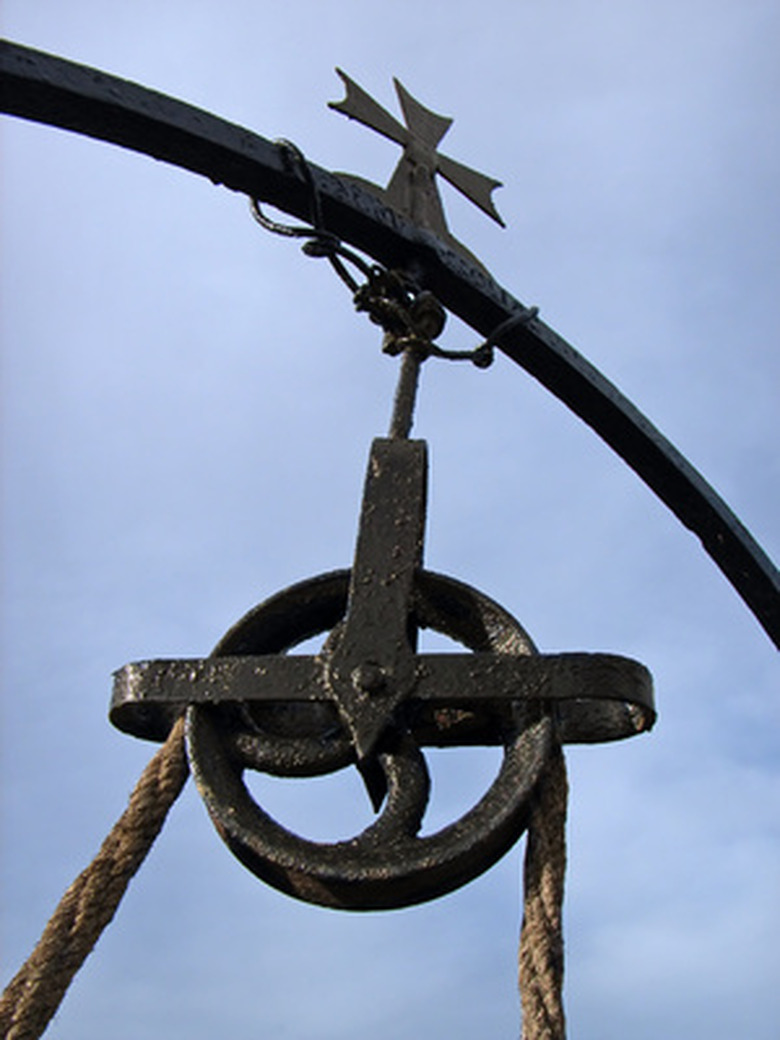How To Find Belt And Pulley Speeds
Belt and pulley speeds are related through a number of dynamic equations. Pulley speeds depend on what is driving the pulley and the size of the pulley and the pulley it is connected to. When two pulleys are connected through a belt, the velocity of the belt for both pulleys is the same. What can change is the distance the belt has to travel over each pulley. This is governed by the size of the pulleys.
Step 1
Locate the pulley and power source driving the system. This is usually an electric motor or some form of internal combustion engine. Start at the drive pulley and measure it. Then measure the pulley that the drive pulley is connected to through the drive belt. For example, the drive pulley could be a 2-inch pulley and the driven pulley could be a 4-inch pulley.
Step 2
Determine the speed of one of the pulleys. The easiest pulley speed to determine is usually the drive pulley because for electric motors, the pulley speed is the speed of the motor. Internal combustion engine speeds can be determined with a tachometer. For example, a common speed for electric motors is 1,800 rpm.
Step 3
Determine the pulley ratio. The pulley ratio depends on the size of the two pulleys. Since the drive pulley is 2 inches and the driven pulley is 4 inches, the pulley ratio is 4 divided by 2, which equals 2. This means that the drive pulley has to turn two times to turn the driven pulley once.
Step 4
Find the speed of the driven pulley by solving the pulley speed equation (N1)(D1)=(N2)(D2). D1 is the diameter of the driven pulley, D2 is the diameter of the drive pulley, N1 is the speed of the driven pulley and N2 is the speed of the drive pulley. Plug in what you know: (N1)(4)=(1800)(2). Solving this equation yields that N1 is 900 rpm.
Step 5
Calculate the belt velocity by multiplying the circumference of the pulley by the speed of the pulley. For example, the drive pulley has a circumference of (Pi)(D2). This equals 2(Pi). The speed of the pulley is 1,800 rpm. Multiplying these equals 11,304 inches per minute. Divide this by 12 and you get 942 feet per minute.
Cite This Article
MLA
Kinsey, William. "How To Find Belt And Pulley Speeds" sciencing.com, https://www.sciencing.com/belt-pulley-speeds-7559165/. 24 April 2017.
APA
Kinsey, William. (2017, April 24). How To Find Belt And Pulley Speeds. sciencing.com. Retrieved from https://www.sciencing.com/belt-pulley-speeds-7559165/
Chicago
Kinsey, William. How To Find Belt And Pulley Speeds last modified March 24, 2022. https://www.sciencing.com/belt-pulley-speeds-7559165/
